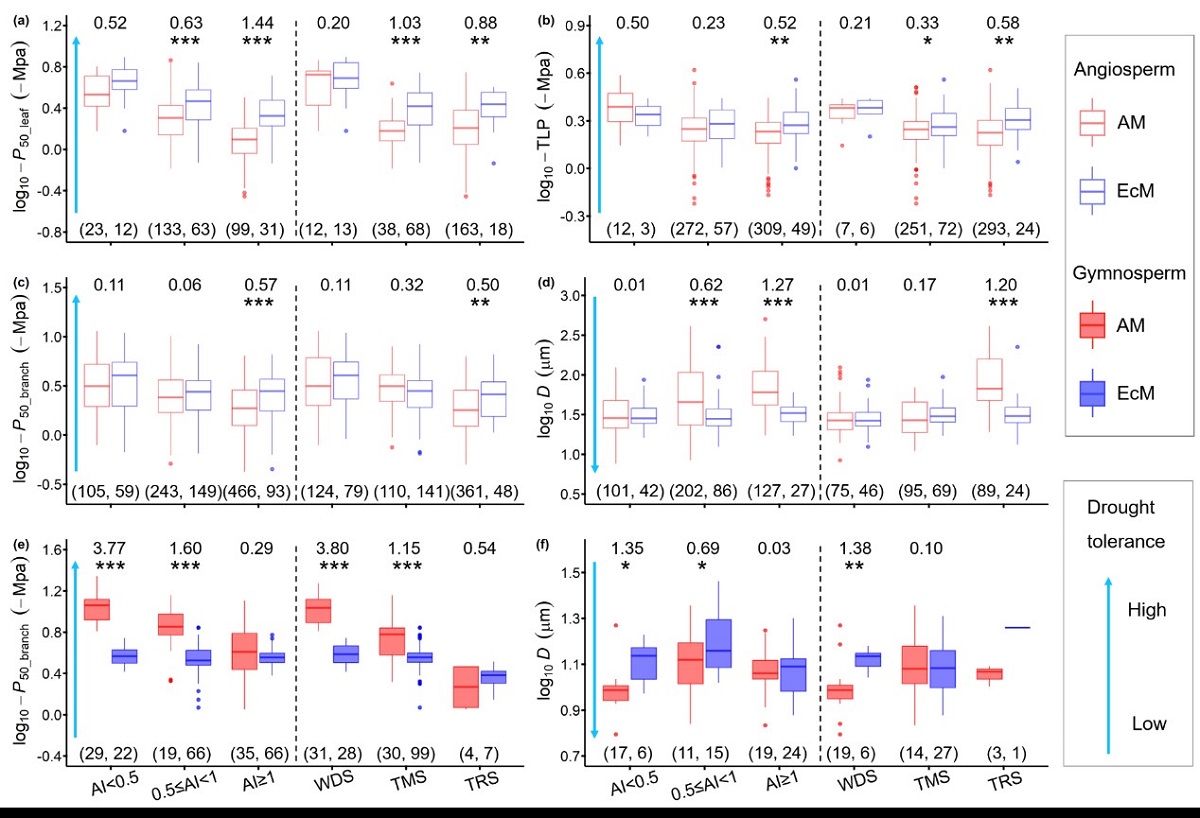Contrasting drought tolerance traits of woody plants is associated with mycorrhizal types at the global scale
It is well-known that the mycorrhizal type of plants correlates with different modes of nutrient cycling and availability. However, the differences in drought tolerance between arbuscular mycorrhizal (AM) and ectomycorrhizal (EcM) plants remains poorly characterized. To explore how AM and EcM woody plants differ in drought tolerance at the global scale, researchers from South China Botanical Garden, Chinese Academy of Sciences synthesized a global dataset of four hydraulic traits associated with drought tolerance of 1,457 woody species (1,139 AM and 318 EcM species) at 308 field sites. They found that 1) AM angiosperms are less drought-tolerant than EcM angiosperms in wet regions or biomes, but AM gymnosperms are more drought-tolerant than EcM gymnosperms in dry regions or biomes, and 2) in both angiosperms and gymnosperms, variation in hydraulic traits as well as their sensitivity to water availability were higher in AM species than in EcM species.
These results suggest that global shifts in water availability (especially drought) may alter the biogeographic distribution and abundance of AM and EcM plants, with consequences for ecosystem element cycling and ultimately, the land carbon sink. This work has been published online in New Phytologist: https://doi.org/10.1111/nph.20097.

Fig. 1. The differences in each of the hydraulic traits between arbuscular mycorrhiza (AM) and ectomycorrhiza (EcM) plants among humidity gradients and biomes. Hydraulic traits include leaf water potential at 50% loss of leaf hydraulic conductance (P50_leaf), leaf water potential at turgor loss point (TLP), branch water potential at 50% loss of branch hydraulic conductivity (P50_branch) and xylem vessel/tracheid diameter (D). Three humidity gradients, divided according to the aridity index (AI), include semi-arid and arid (AI<0.5), subhumid (0.5≤AI<1) and humid (AI≥1). Three biomes include semiarid woodland and shrubland (WDS), temperate seasonal forest (TMS) and tropical/subtropical seasonal forest (TRS). The light blue line with arrow indicates the direction of higher drought tolerance for each trait. The number of combinations of species-by-site were listed below the box. The box-plots show quartiles for each trait with extreme values as dots.Traits were compared between AM and EcM plants using effect sizes (Cohen’s D) and t-tests. The effect sizes were listed above the box; *, P<0.05; **, P<0.01; ***, P<0.001.
File Download: